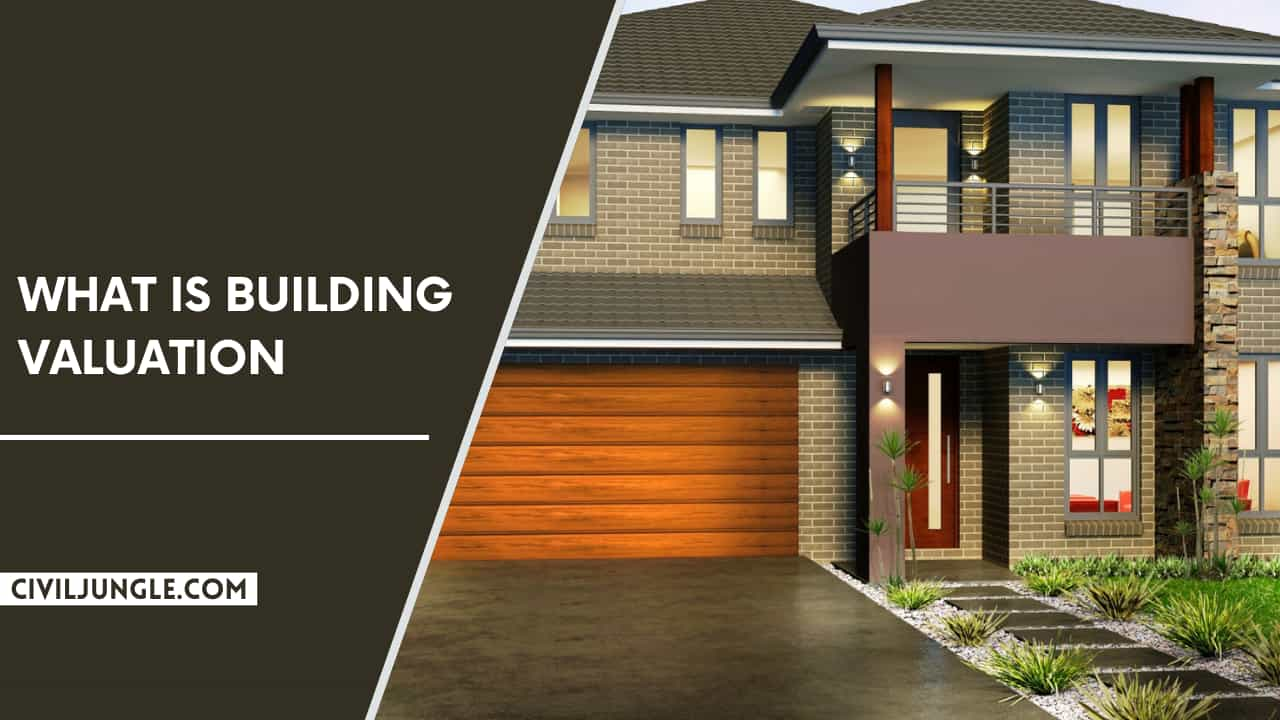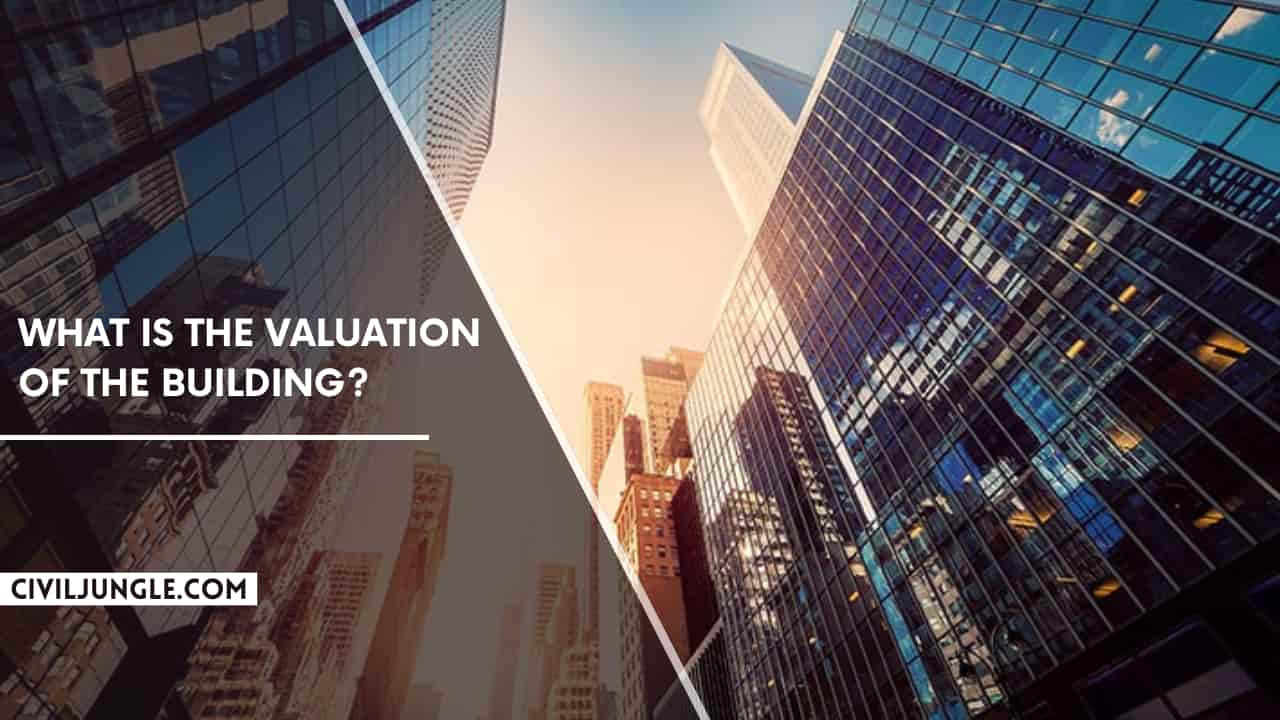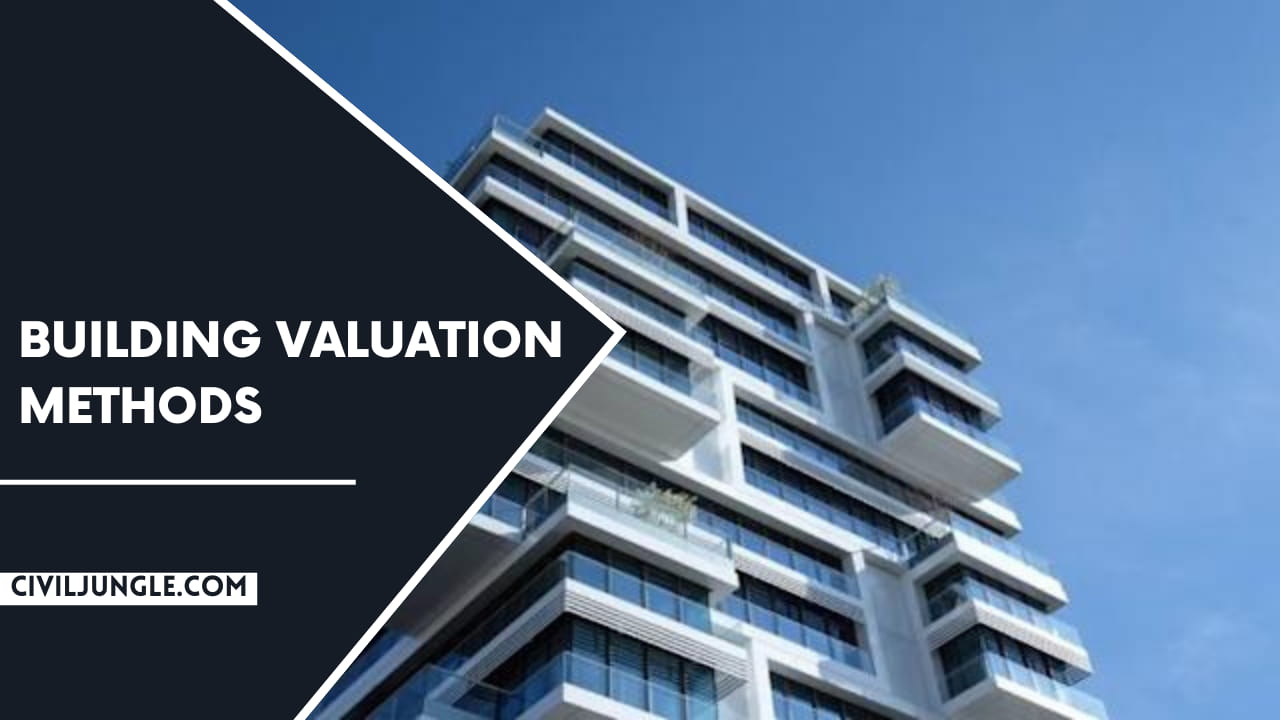
Introduction of Building Valuation
In this world, everyone has his value. Just like that, every materialistic thing has its specific value. The word ‘value’ refers to the worth or cost of something.
The calculating method of the worth or monetary cost of a building at present is known to us as the building valuation. Before selling or buying a building or any other thing, it is wise of you to know the exact value of the thing you are buying.
For buildings, the same goes. Before one buys a building or sells a building he should estimate the present value of the property.
And this estimation process should be done correctly. Many people make some common mistakes while estimating the value of a building or in other words calculating the worth of a building.
That’s why many people do not get the correct value while selling their building and many people buy a building without knowing the present value.
In both cases, they suffer heavy losses. So if you are going to sell or buy a building then you should calculate the value correctly. Do not make silly mistakes while calculating the value of your building.
The value or worth of everything differs with time. With fluctuating inflation and deflation the cost of everything in the market changes. This is applied to both movable and immovable properties. A building is an immovable property. That means you can not move the property.
This is the reason the same buildings in different areas cost differently. For instance, a building in a city will cost much more than a building in the countryside or the village area.
The reason for this difference is the availability of other important things for living such as healthcare and other things. So the value of a building is dependable, unlike many other things.
The worth or value of a building depends on some important factors that must be considered important while evaluating the value of a building. Some of these things are the type of material and the quality of used contents like cement, concrete, and rods, in making the building.
The location plays a significant role in evaluating the worth of a building. Some other factors like the type of building, the size of it, the building’s structure, and its shape must be considered while evaluating a building.
The height as well as the breadth of the building, thickness of the roofs and walls, height of roofs, the floors, and flooring impact the value of a building.
The nature of a building similarly influences the valuation process. Different nature of buildings cost differently. For example, frame structure buildings will cost differently from load-bearing buildings.
The valuation of a building furthermore depends on the demand. The demand for purchasing a building varies depending on several factors from time to time, from region to region. The more the demand, the more the value id.
What Is Building Valuation?

Building valuation is a process that saves you from suffering a heavy loss when you sell your house or building or when you buy a house or building. Making a house takes a lot of time as well as money.
So when you suffer a loss while selling the house you not only lose your hard-earned money but also your precious time. The process of building valuation saves you from making these mistakes and saving both.
One of the extensively crucial components of calculating the price or worth of a building is its location. Location is the greatest factor. Changing the location of the house changes the value of the house. The same house if located in different regions costs differently.
That’s the reason Beautiful and large sturdy buildings in the countryside cost less than tiny small buildings in a city. Furthermore, the healthcare system, water supply, sewer, availability of malls, and transport systems increase the value of any property.
Buildings that are constructed on freehold lands are usually more valuable and costlier than buildings that are constructed on leasehold land.
The age of a building is also a significant factor that influences its value of a building. The older a house gets the more its value depreciates. The value or worth of a building is greatly affected by its age. So while evaluating the price or in other words while evaluating the building, age must be known.
If the exact age is not known of a building then professionals must be hired to inspect the building and the probable age of the house. It is also important for safety. If a building is too old to be lived in then the building should not be bought.
Calculating the present cost of a building needs to look at some other matters as well. Before estimating the value of the house the records should be checked. The bills and expenses will help you in evaluating the price of a building.
Depreciation is also a major factor and while the valuation of the building this factor must not be ignored. The value of a building depreciates every year. There is a rate of depreciation of houses every year. The rate is called the depreciation rate.
The depreciation rate is variable from region to region and not only that but also with the increasing age of the building the rate of depreciation increases.
For example, if a building is 5 years old then the depreciation value is .5% per year. But if the house becomes older than 10 years then the depreciation value increases to .75% per year. This value can change from region to region.
What Is Valuation of Building?

The valuation of the building relies on a few points. Demand and supply are surely the most significant points in this.
Varied from time to time, the value of a building sometimes goes up and sometimes goes down. If the demand is less then the value is likely to be limited and just like that if the demand is huge then the cost of a building both buying and selling will be greater.
If the number of buyers is less than the number of available buildings for sale then the value of all the buildings will fall no matter what type of building is, how old the building is, and how well it was constructed. Just the same goes when demand increases.
If the number of buyers is more than the number of buildings available for sale then the value or cost of all the buildings will increase.
The valuation of buildings is dependent on a few other things. The design of the house is one of these things. It is an undeniable fact that the value of anything is equally proportional to the beauty of the thing.
In the case of buildings, the value of the building increases when the building is beautiful. That consists of both outward looks and inner parts. In this case windows, doors, and balconies play a crucial role.
In the valuation method of a building, the present value of a building is determined. The price or cost of a building is not stable. It fluctuates with time. So while doing the valuation of a building the time must be mentioned.
The process of valuation of a building considers attention to the nature of the structure of the building, the quality of material used in making the building, the life of the structure, age of the structure.
Purposes of Building Valuation

Here, the purposes of building valuation are as follows.
- Both for buying a building and selling a building – It is crucial to know the value of a building in both the cases of buying a building or selling a building. Without proper valuation of the building, it is unwise to proceed with the procedure. This can lead to heavy losses. When someone buys a building he or she puts his hard-earned money off his. So suffering a loss will be depressing. So it is required that the valuation process of the building must be done before selling or buying. The valuation of the building should be done by a professional.
- Taxation– The amount of tax to be paid on a house or building is fixed by doing the valuation of the building. Various taxes we need to pay every year. There is a base of taxation on everything. Taxes like municipality tax, property tax, and health tax all are based on the result of the valuation of the building. For buildings with different monetary valuations, the taxes will also be different. So making the perfect assessment of the amount of payable taxes on property tax, or various other taxes is done based on valuation.
- Assessment of the amount of payable rent- If you live in a rent house you must know whether the rent you are paying monthly for living in the building is weather fair or not. Many people pay rent without knowing the value of the house they are living in thus suffering severe loss. And also in the case of giving your building to rent, you must know the value of your building to determine the amount of payable rent. The rent should be a certain percentage of the total value of the building. Usually, the payable rent annually is 10% to 6% of the current value of the building.
- Loan security before taking a loan or mortgage– A mortgage is the security of a loan that is done based on the valuation of a building. Before giving a loan the banks usually take a mortgage. In case the person is unable to pay the debt, the property is seized by the bank, and the loan amount is recovered. So before giving a loan to someone it is advisable to do the exact valuation of the property he is willing to keep as a mortgage. In cases of buildings, the amount of the loan should not exceed the worth or value of the building.
- Compulsory acquisition – There are many incidents when a property or building is acquitted by the government. There can be many reasons behind these acquisitions. For running various projects, constructing roads, power greed, construction of new rail lines, etc. Properties are acquitted. In such cases compensation is paid to the owner of the property. In the case of acquiring a building, the owner is to be paid some compensation. The value of this competition to be paid should be based on the value of the property. So for acquisition, it is necessary to know the value of the building throw building valuation.
- Salvage value- salvage value is the estimated worth of a property that is old and not useful anymore. To determine the price of the property or building that will be depreciated, the cost of the property salvage value is subtracted. In other words, it is the resale value.
- Scrap value– scrap means ruins or debris. The value of disassembled materials is known as scrap value. After the life of the building when it is dismantled the price of scraps like rods, timbers, bricks, etc will procure some money. This amount is called scrap value.
Building Valuation Methods

Here, the different methods of building valuation are as follows.
1. Direct Comparison with the Capital Value:
The method of comparison with the direct value is comparing the building’s worth to another building’s worth directly. The buildings should be located in the same area.
2. Rental Method Valuation:
In this method of calculation of the building we deduct all the outgoings from the gross rent. In this method we assume the rate of Year of Purchase value. The capitalized value or the valuation of the property will get by multiplying the net income with the year’s purchase.
3. Valuation Based on Profit:
In this method, valuation is based on the profit of that property and it is generally used in commercial properties like restaurants, malls, office, hotels, cinemas, etc.
The net annual income is calculated by deducting all the expenses and outgoings. In this type of case the valuation is very much higher than the actual cost of the construction.
4. Valuation Based on Cost:
In this type of valuation the building construction cost is the valuation cost. The net annual income is calculated by deducting all the expenses and outgoings.
5. Development Method of Valuation:
Those properties, which are under development are called development method of valuation. This type of valuation is applicable for under construction buildings, roads, etc. The net annual income is calculated by deducting all the expenses and outgoings.
6. Depreciation Method of Valuation:
In depreciation method, the valuation is categorized into four parts, those are in the following-
- Roofs
- Walls
- Floors
- Door and windows
The depreciated value of any property is calculated by the following formula-
D =P x [((100-rd))/100]n
Where,
- D = Depreciated value
- r = rate
- d = depreciation
- n = age of the building in a year
What Is Land Valuation?

Land valuation is the process where we value some properties, including the value of land and other improvements which will be made after.
Land valuation is not a site valuation because in site valuation there are no mortgages, leases, etc. Land value will arise when the demand of the land is too much high but the availability of the land is less.
Land and Building Method of Valuation

There are generally six numbers of methods are available for land and building valuation; those are in the following-
1. Comparative Method
The comparative method is one of the most popular methods which are used among all of other methods. In this process, the valuation of the plot is done by the recent prices of that plot, including some criteria like location, shape, sizes and other features.
For building, the valuation experts check the value of those structures for some years but this is very much applicable in active market where it is too easy to determine the transaction prices.
2. Development Method
This is the valuation method which is applicable where the structure is under development. In this process some essential factors are included those are usage, location of structure, FSI, nature of the soil, etc. Those factors are taken into the valuation and the valuation of building is considered.
3. Allocation Method
This type is valuation is applicable for some property where we assume a relationship between the land value and the property value. This type of valuation is very much applicable where land scarcity happens and the build up property is available.
4. Extraction Method
Here, the comparable land unit prices are extracted from developed property by deduction the built-up area estimated value. In this process, the valuation of the plot is done by the recent prices of that plot including some criteria like location, shape, sizes and other features.
This method is widely applicable in those properties which is newly constructed because they have negligible amount of depreciation..
5. Income Capitalization Method
This method has two sub-category
5.1. Capitalization of Ground Rent:
For an open plot, the market prices and capitalization rates are taken in highest amount. At first we calculate the market freight and market charges then derive market capitalization rates to determine the current value of the plot.
5.2. Land Residual Technique:
It is another type of technique where we build a building with optimum aspects i.e. highest and best aspect. After that we calculate net operating income and then allocate all the remaining income to the land.
6. Belting Method of Valuation
In this type of valuation we take two factors into our considerations, those are depth of the plot and frontage.
If the plot is in front of main road then the base value of the plot will increase, same like if the depth is the plot increases the value of the plot decreases. Depth of the plot means the distance from the main road. It is very difficult in belting method of valuation is the rate of decreases in depth of the plot.
In belting method valuation, the whole area is divided into some strips or some lines to divided some areas according to the depth of the road because higher valuation is done when the depth of the plot is very low.
Valuation of Building PDF: Click Here
Frequently Asked Questions (FAQ)
What Is Building Valuation?
Building valuation is the process of determining the present worth or monetary cost of a building. This estimation is crucial for various purposes, such as buying, selling, taxation, renting, loan security, and compulsory acquisition.
Why Is Building Valuation Important?
Building valuation is important to ensure that you get a fair price whether you are buying or selling a property. It helps in accurate tax assessment, determining fair rent, securing loans, and receiving proper compensation during compulsory acquisitions.
What Factors Influence the Value of a Building?
Several factors influence the value of a building, including location, age, quality of construction materials, building structure, size, design, and the current demand for properties in the area.
How Does Location Affect Building Valuation?
Location is one of the most significant factors in building valuation. Buildings in urban areas with better access to amenities like healthcare, transportation, and shopping centers generally have higher values compared to those in rural areas.
What Is the Impact of a Building’s Age on Its Valuation?
The age of a building impacts its valuation as older buildings typically depreciate in value over time. The depreciation rate varies depending on the building’s age and condition.
What Are the Common Methods of Building Valuation?
Common methods of building valuation include direct comparison with capital value, rental method valuation, valuation based on profit, valuation based on cost, development method, and depreciation method.
What Is the Difference Between Salvage Value and Scrap Value?
Salvage value is the estimated worth of a property that is old and no longer useful, while scrap value refers to the value of disassembled materials such as rods, timbers, and bricks after the building’s life has ended.
How Does Demand and Supply Affect Building Valuation?
The value of a building fluctuates with changes in demand and supply. If the demand for buildings is high and supply is low, property values increase. Conversely, if supply exceeds demand, property values decrease.
What Is Land Valuation, and How Is It Different from Building Valuation?
Land valuation determines the value of the land itself, considering potential improvements and market demand. Building valuation, on the other hand, focuses on the value of the constructed property. Land valuation often arises when the demand for land is high and its availability is limited.
How Do Professionals Determine the Value of a Building?
Professionals use various methods to determine the value of a building, considering factors like location, construction quality, age, size, and current market conditions. They may use comparative analysis, cost-based methods, or income-based approaches to arrive at an accurate valuation.
Can the Value of a Building Change Over Time?
Yes, the value of a building can change over time due to factors such as market trends, changes in demand and supply, aging, depreciation, and improvements made to the property.
Why Should I Hire a Professional for Building Valuation?
Hiring a professional ensures an accurate and unbiased assessment of your property’s value. Professionals have the expertise and knowledge to consider all relevant factors and use appropriate methods to determine the correct valuation. This helps you avoid potential financial losses and make informed decisions.

